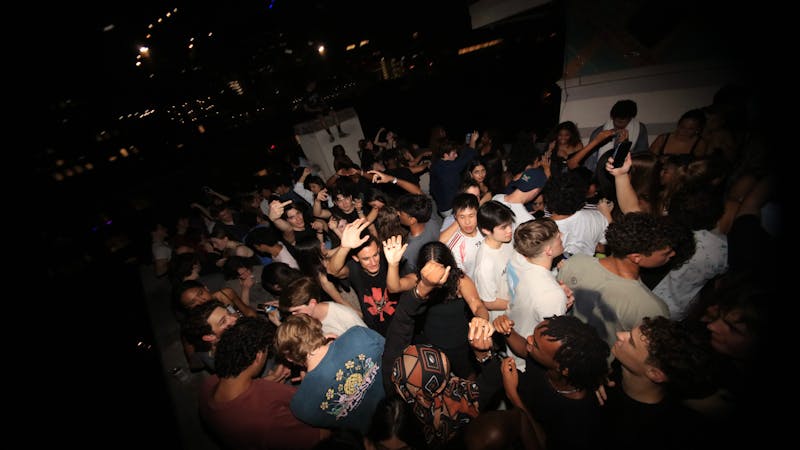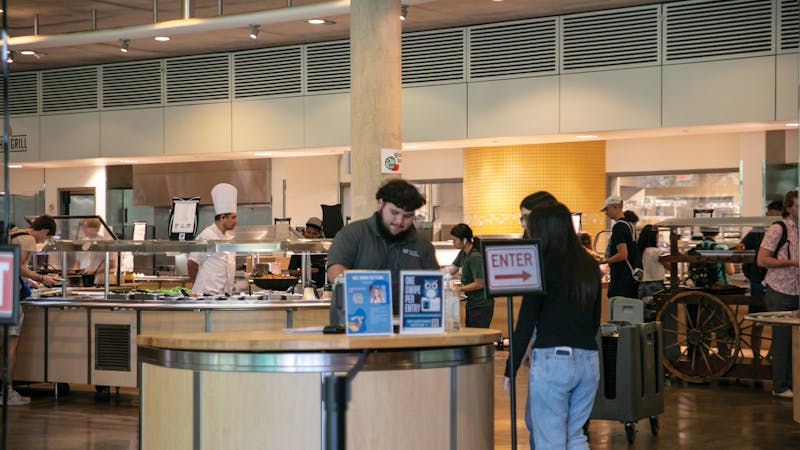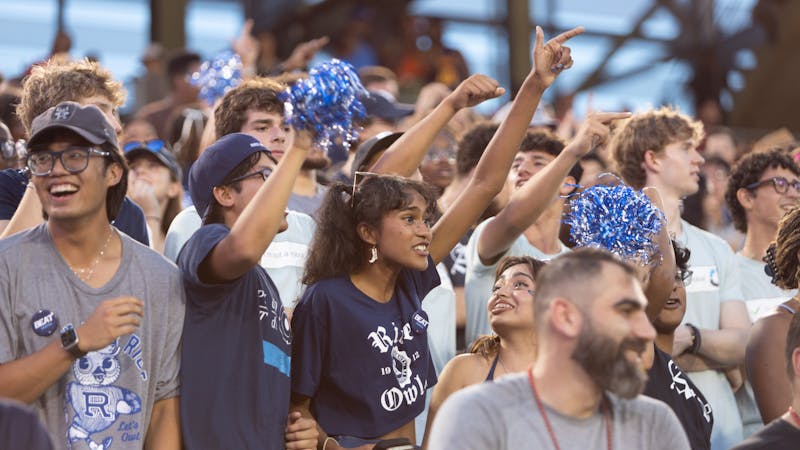Experience with class size varies widely by department

According the U.S. News and World Report rankings, Rice boasts a student to faculty ratio of 6 to 1. However, for some students in introductory courses like Mechanics (PHYS 101), with more than 120 students enrolled in the course, this ratio can seem unimaginable.
Large introductory courses with more than 50 students are in fact a minority of course offerings: Just 7.3 percent of Rice classes have greater than 50 students, and these classes are split fairly evenly between the School of Engineering, the School of Social Sciences and the School of Natural Sciences. According to data supplied by the Office of Institutional Research, with the exception of engineering and social sciences, every other undergraduate school has an enrollment of fewer than 20 students in at least 50 percent of their courses.
According to Associate Vice President for Institutional Research and Analysis Shiva Jaganathan, the undergraduate student to faculty ratio reported in U.S. News is calculated by dividing the number of undergraduate students (full time equivalent) by the number of instructional faculty (full time equivalent) who teach undergraduates. The U.S. News and World Report then rates universities on the number of classes with fewer than 20 students and those with more than 50.
Office of Institutional Research Analyst Adele James said Rice has held fairly steady with 65 to 70 percent of classes having under 20 students in recent years. James said with regard to rankings, maximizing this percentage would result in higher U.S. News scores for ratings on class sizes.
According to Provost Marie Lynn Miranda, Rice is more focused on maximizing student experience rather than the percentage of classes under 20 students.
“If the 20th student is interested in the material or needs the class to graduate we should have those students in the class,” Miranda said.
Miranda said student-to-faculty ratios are more telling of research and advising opportunities, while class sizes instead reflect student demand.
Vice President of Finance Kathy Collins said each department has a budget for faculty and the number of faculty is continually discussed between the provost and the deans. Miranda said demand in one year informs funding for the next, as funding and faculty cannot be adjusted instantly but annually.
Individual departments decide teaching assignments, class caps, how many sections to offer and which classes will be taught.
Dean of the School of Social Sciences Antonio Merlo said there are trade-offs between offering required upper-level courses, permitting interested students into introductory courses and ensuring majoring students are supported. To determine this balance, department chairs consider the faculty members available, their strengths and the department’s needs.
George Zodrow, director of undergraduate studies for the economics department, said large lecture classes can be difficult for eliciting feedback from the students.
“I teach a class that is usually 20 to 25 students and you can talk to the students, you can push on them a little bit to see how they’re learning,” Zodrow said. “With a really big class, you can’t really do that. You’re just lecturing. It’s all presentation, not too much interaction.”
Lovett College sophomore Meghana Gaur said she is enrolled in three economics classes, with about 40 to 60 students in each. Gaur said her class sizes have not posed a problem.
“You get to know your professors,” Gaur said. “You feel you need to go to class because you’re developing a relationship with your professor.”
While 47 percent of social sciences classes have fewer than 20 students, 92 percent of humanities classes can say the same. The School of Humanities has guidelines requiring each class to have five to 19 students; any classes outside these parameters require the dean’s approval.
“As soon as you start increasing enrollment, you start diluting the individual experience,” Dean of the School of Humanities Nicolas Shumway said. “And that, I think, is inimical to one of the things that Rice stands for.”
When classes fall below the five-student minimum, Shumway said, which happens with five to 10 classes per semester, the department chairs must prove the class fulfills a major requirement.
Duncan College freshman Anna Kulma said her Greek and Latin classes have fewer than eight students. She said the small classes make it easier to ask questions and allow one-on-one interactions with professors.
“You’d expect it to be kind of awkward, but it’s really relaxed and comfortable,” she said.
For Duncan sophomore Erika Schumacher, larger classes are harder for students to speak up.
“It’s easy for me to drift off and not feel accountable,” Schumacher said.
In the School of Natural Sciences, 5.7 percent of classes have more than 100 students, the highest percentage of any Rice schools.
According to chemistry department chair Matteo Pasquali, the department faces challenges such as limited space in labs and teaching chemical engineers, pre-medicine students and other natural sciences majors.
Pasquali said upper-level courses are typically capped at 20 to 30. For lower level courses, the department tries to cap enrollment below 50 students, with the exception of Organic Chemistry and General Chemistry.
The department also uses the flipped classroom model, in which students learn new material independently and spend class time in groups while the professor offers help.
“For a flipped classroom, you can still give the same personalized learning experience whether you have a class of 50 or 200,” Pasquali said.
Brown College freshman Dan Englund is enrolled in General Chemistry, which enrolls over a 100 students but also employs group work and a Socratic method of inquiry.
“I hesitate to call my interactions with Dr. [Lesa] Tran in this setting meaningful, but it does make me feel a little less anonymous when I have my questions answered in a small group setting,” he said.
More from The Rice Thresher

Dis-O, move-in weekend see increase in alcohol transports from last year
Rice’s first wet weekend of the year saw four times as many calls for intoxication-related transports of students to the hospital compared to the previous three years, according to emails sent out by college presidents and chief justices.

On-campus meal plan changed to unlimited swipes
Housing and Dining recently revealed a new dining plan for the upcoming semester. The required on-campus meal plan now has unlimited meal swipes, compared to 375 meal swipes last year. H&D said the previous on-campus meal plan was for students who intended to eat on campus 15 to 25 meals a week.

Rice Stadium student section relocated
The Rice Stadium student section has been relocated to sections 106 and 107, according to an announcement from Rice Athletics on X.

Please note All comments are eligible for publication by The Rice Thresher.